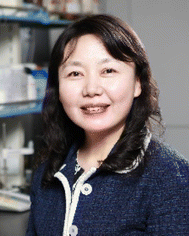Introduction to photofunctional materials and transformations
Li-Zhu
Wu
Technical Institute of Physics and Chemistry, Chinese Academy of Sciences, China
Photons are a combination of particles and waves, which carry both energy and information. Dedicated to the utilization and transduction of photons, photofunctional materials and transformations have profound meanings from fundamental understandings to applications. As a representative energy transformation, natural photosynthesis converts photon energy from the sun (solar irradiation) into chemical energy as the ultimate driving force for the biosphere. At the same time, the ‘photofunctional materials’ in our eyes process photon information to formulate our visual perception of the world. The beauty of photofunctional materials and transformations has aroused growing interest in physics, chemistry, mathematics, material science, biology, medical science, artificial intelligence, photonics and engineering. In this situation, the thematic collection on ‘photofunctional materials and transformations’ offers a timely platform to witness and communicate emerging interdisciplinary discoveries.
This collection includes frontier articles, reviews and perspectives on solar-to-chemical conversions, organic photoredox transformations, photovoltaics, photoelectronics, photobiology and phototherapy. We endeavored to present the landscape of photofunctional materials and transformations in diverse and burgeoning branches, and among hundreds of interesting discoveries and insightful discussions in Journal of Materials Chemistry A (55), Journal of Materials Chemistry C (25) and Chemical Communications (50), a few examples are highlighted here.
Over the past few decades, the toolbox of photofunctional materials has greatly expanded from organic π-molecules to metal complexes, nanomaterials and supramolecular assemblies, and smart collaboration of different materials therefore becomes critical to promote desired functions. In this collection, Shi et al. (https://doi.org/10.1039/D2TA09715J) reviewed host–guest assemblies to pre-organize and confine molecular catalysts and photosensitizers in close spatial proximity. These assemblies regulate photoinduced energy and electron transfer, mass transfer, reaction pathways and kinetics, and replicate the enzyme-like microenvironments in natural photosynthesis to construct effective and selective solar-to-chemical devices.
The development of photofunctional materials boosts more effective solar energy utilization for sustainable energy supply. Particularly, ever-growing efficiency and cost-competitiveness of solar cells have been witnessed in the past few decades. In this collection, Hou et al. (https://doi.org/10.1039/D2TA07249A) reported two low-cost pyrazine-based polymer donors with completely non-fused conjugated backbones, which attained a conspicuous 16.16% power conversion efficiency among organic solar cells based on low-cost polymer donors. In addition to molecular-level modifications, Shao, Pang and Cui et al. (https://doi.org/10.1039/D2TA09561K) analyzed the current problems of Cu2ZnSn(S,Se)4 (CZTSSe) solar cells, and highlighted interface engineering as an essential strategy to improve power conversion efficiencies.
Taking advantage of solar energy, photocatalytic conversion offers promising strategies for environmental remediation. Li and Wang et al. (https://doi.org/10.1039/D2TA09523H) reviewed the proceedings of photocatalytic (micro)plastics degradation from inorganic semiconductor oxides to organic–inorganic hybrid composites, including doped and surface-modified nanoparticles. Pertinent directions on photocatalyst development, pre-treatment of (micro)plastic reactants, and photocatalytic conditions are given to advance photocatalytic (micro)plastics degradation into an applicable technology in the future.
In addition to environmental protection, solar-to-chemical conversion offers innovative, carbon-neutral and atom-economic alternatives to the energy-intensive chemical manufacturing. Here, Hou et al. (https://doi.org/10.1039/D2TA09122D) fabricated a Z-scheme photocatalyst assembly of nonstoichiometric W18O49 onto two-dimensional carbon nitride nanosheets. Benefitting from intense localized surface plasmon resonance absorption and a strong internal electric field enabled by appropriate band alignment, highly effective H2O2 photosynthesis was realized under broad-spectrum irradiation up to 700 nm, which offers an attractive alternative to conventional H2O2 manufacturing under high temperatures and pressures.
To construct complex and value-added organic molecular skeletons, visible light photoredox catalysis brings unprecedented opportunities for photochemical transformations with high regio-, chemo- and stereo-selectivity. Yang and Zuo et al. (https://doi.org/10.1039/D3CC00532A) used dual bisphosphonium and cobaloxime catalysts to perform selective oxidation of benzylic alcohols under oxidant-free and environmentally benign conditions. The photochemical reaction showed exclusive reactivity at benzylic positions to selectively yield aldehyde products with promising scalability under continuous-flow conditions. Zhang and Yu et al. (https://doi.org/10.1039/D2CC06705F) achieved reductive cross-coupling of allylic acetates with tertiary/secondary alkyl bromides, by adopting dual photoredox/palladium catalysis and Hantzsch ester reductant. The protocol facilitated C(sp3)–C(sp3) bond construction with an excellent stereoselectivity (up to 96% ee) and regio-selectivity (>95%) under mild conditions.
Photofunctional materials not only enable crucial energy and chemical conversions, but also render new prospects for information display, storage and transduction. Che and Cheng et al. (https://doi.org/10.1039/D2TC05257A) developed three-color solution-processable white organic light-emitting diodes (SP-WOLEDs) comprising blue and orange luminescent Au(III) complexes and the deep-red tetraphenyldibenzoperiflanthene emitter. The WOLEDs demonstrated promising external quantum efficiency and a >90 color rendering index. Fang and Wu et al. (https://doi.org/10.1039/D2CC06707B) took advantage of the tunable photoswitching properties of photochromic dithienylethene-based polymers and realized effective pattern encoding with superb resolution up to about 30 nm. In https://doi.org/10.1039/D2TC04430G, Ji and Gao et al. prepared hydrogels for effective green-to-blue upconversion, which featured excellent oxygen resistance, high transparency, strong mechanics, and malleability, maintaining promising efficiencies even after sealed storage for over 6 months. Li et al. (https://doi.org/10.1039/D2TA09607B) developed a molecular switch integrating AIE luminogens, and photochromic and NIR emissive components. Visible light irradiation under 405 nm quenched the fluorescence of the molecular switch in the solid state, which was recovered under long wavelengths, exhibiting excellent fatigue resistance and cycling stability. Its PMMA film demonstrated prototypic 32-level optical information storage, showing photoswitchable NIR fluorescence molecules as potential photonic optical storage material.
We thank all authors, reviewers, and editorial and production staff of this themed issue. We hope you will enjoy this interdisciplinary feast of ‘photofunctional materials and transformations’ and it will spark new ideas in developing novel photofunctional materials and applying them to valuable transformations.
| This journal is © The Royal Society of Chemistry 2023 |

